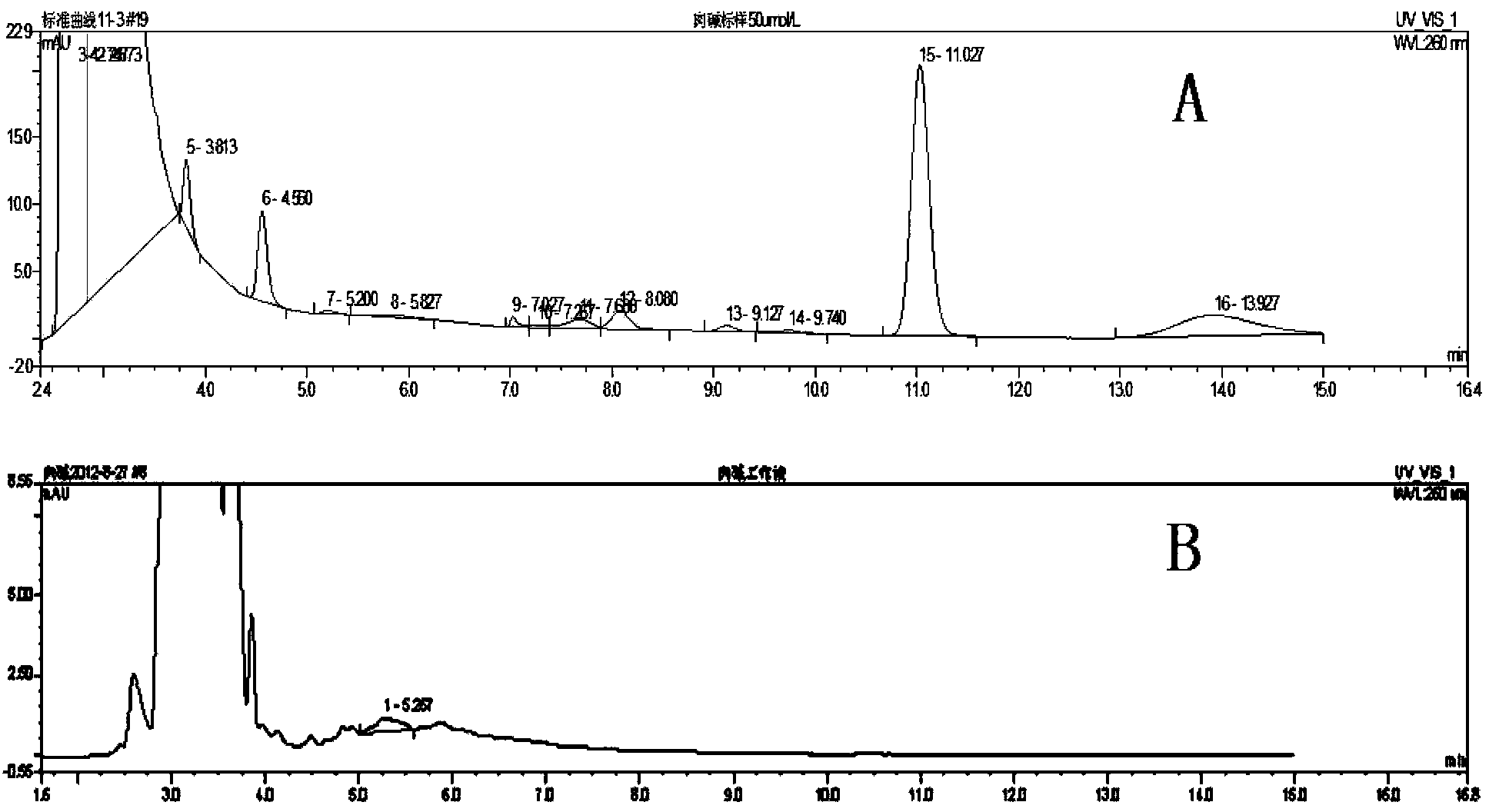High efficiency liquid chromatography method for detecting carnitine content in fish plasma
A high-performance liquid chromatography and carnitine technology is applied in the field of carnitine content detection, which can solve the problems of multiple impurities, low recovery rate, and difficulty in meeting the requirements of blood sample detection.
- Summary
- Abstract
- Description
- Claims
- Application Information
AI Technical Summary
Problems solved by technology
Method used
Image
Examples
Embodiment Construction
[0029] Tilapia is a small and medium-sized fish with the characteristics of miscellaneous food habits, low oxygen resistance, and strong reproduction. Therefore, the present invention takes tilapia as an object to measure the carnitine content in blood plasma, and establishes a corresponding efficient liquid chromatography. The specific research is as follows:
[0030] 1 Materials and methods
[0031] 1.1 Experimental animals
[0032] Healthy Gifu tilapia, weighing (82.71±1.28) g, was provided by Guangxi Yin and Breeding Center. During the experiment, they were kept in the indoor cement pool for a week before the water temperature experiment, continuously oxygenated for 24 hours, and fed quantitatively at 9:00 am and 17:00 pm every day. The feeding of bait was stopped 3 days before the experiment. The experiment was carried out in a glass aquarium (105cm×50cm×60cm), the water temperature was controlled at (28±1)°C, pH (6.9±0.1), and the aeration state was kept continuously...
PUM
| Property | Measurement | Unit |
|---|---|---|
| weight | aaaaa | aaaaa |
Abstract
Description
Claims
Application Information
 Login to View More
Login to View More - R&D
- Intellectual Property
- Life Sciences
- Materials
- Tech Scout
- Unparalleled Data Quality
- Higher Quality Content
- 60% Fewer Hallucinations
Browse by: Latest US Patents, China's latest patents, Technical Efficacy Thesaurus, Application Domain, Technology Topic, Popular Technical Reports.
© 2025 PatSnap. All rights reserved.Legal|Privacy policy|Modern Slavery Act Transparency Statement|Sitemap|About US| Contact US: help@patsnap.com



